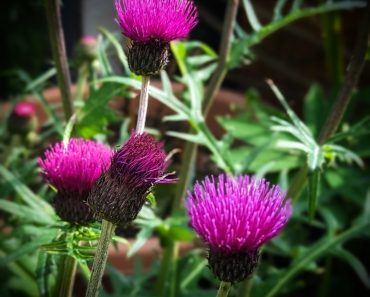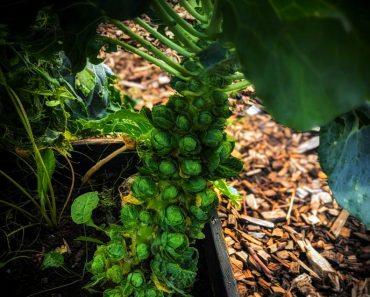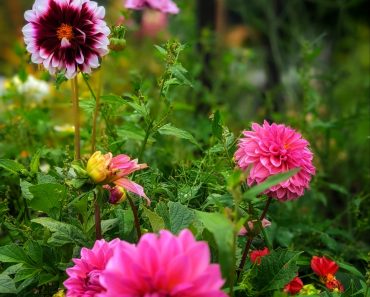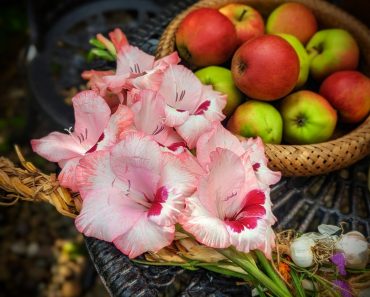Sage ( Salvia officinalis, English Sage) is an easy to grow aromatic herb, mostly used for Culinary purposes. Attractive and drought-tolerant this Perennial Hardy plant has lovely downy soft leaves and can grow up to 60cm Tall. Here is how I grow and brew mine…

This Post may contain Affiliate Links please see my disclosure policy
What’s In A Name?
Sage (Salvia officinalis) is a member of the mint family (Lamiaceae) and is mostly native to the northern Mediterranean. It goes by several other names, Garden Sage, Common Garden Sage and Culinary Sage. The word Sage or Salvia means ‘Wise’ or ‘to be in good health’ and Officinalis refers to a Apothecary, a herb store or a Pharmacy. Aptly named due to the Sage Plants numerous health benefits!
A Little Sage History…
Sage has a long and ancient history, used for Centuries for its medicinal and Culinary benefits. In ancient Rome, sage was considered a superior healing herb! The Romans used the herb in their cooking to aid digestion, they found that adding the herb to fatty meat dishes helped the consumer digest the meats more easily. They also included Sage in their official Roman pharmacopoeia, using the herb to stop bleeding, heal ulcers and soothe a sore throat.
The French at one time produced acres upon acres of Sage, in order to make healing Teas. The Chinese loved the tea so much that they considered it a premium stock and traded 4 pounds of Chinese Tea for every 1 pound of Sage Tea. The Chinese found it to be a valuable herb for treating Typhoid Fever, Kidney and Liver diseases, joint pains and cold symptoms.
7 Sage Tea Benefits Today
Here is a list of all the ways Sage Tea Can Benefit The Body!
- 1. Helps to manage symptoms of the menopause– Particularly good for treating Hot Flushes!
- 2. Helps support heart health– Sage has been found to improve HDL/LDL levels (Good and Bad Cholesterol levels) and also lower triglycerides.
- 3. Supports oral health– Sage tea is often recommended for helping to heal mouth wounds, ulcers, Plaque Issues and soothing sore throats. The flavonoids and polyphenolic compounds found in sage have very strong anti-bacterial properties, making sage an excellent natural remedy for treating diseases that affect the teeth and Mouth.
- 4. Supports skin health-Studies have shown that Sage has the ability to kill harmful fungi and bacteria that can damage the health of your skin
- 5. A Valuable source of antioxidants-Providing your body with molecules that fight free radicals (Free radicals are unstable atoms that can damage your cells, leading to illness and aging)
- 6. Helps to Improve blood sugar levels– Sage has wonderful, natural blood sugar lowering capabilities, proven to improve insulin sensitivity in individuals with diabetes or pre-diabetes. Studies on Mice have shown that fasting blood sugar levels were reduced when their drinking water was swapped with sage tea.
- 7. Helps maintain good brain function-In studies, Sage is said to have beneficial effects on memory disorders such as depression and a condition called cerebral ischemia (a condition where healthy blood flow to the brain is restricted) Other Studies have also shown improvement in memory and cognition, aswell as a noted improvement in mood, calmness, contentment and alertness.
How To Grow Sage
Affiliate Links
Sow Indoors
- Sow Sage Seeds from March to May, in pots, modules or trays (Or Coir Coins like Me) on the surface of moist compost.
- Cover the seeds with a light sprinkling of compost.
- Pop on a sunny windowsill and cover with a propagator lid or cling film until germination occurs.
- Germination can take up to 3 weeks, but is often far sooner.
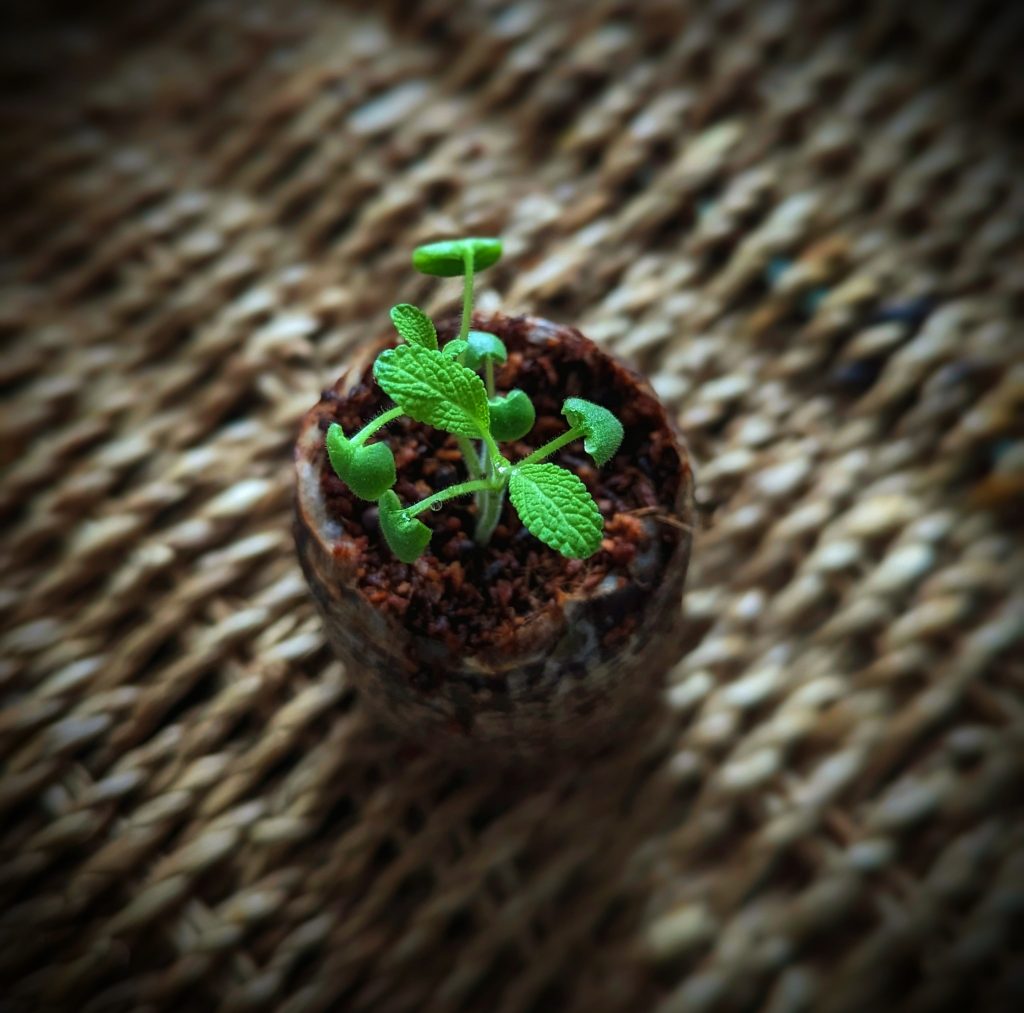
Pot On– When seedlings are large enough to handle, pot on into larger pots and plant out once all risk of frost has passed. * Remember to harden off indoor raised seedlings first…
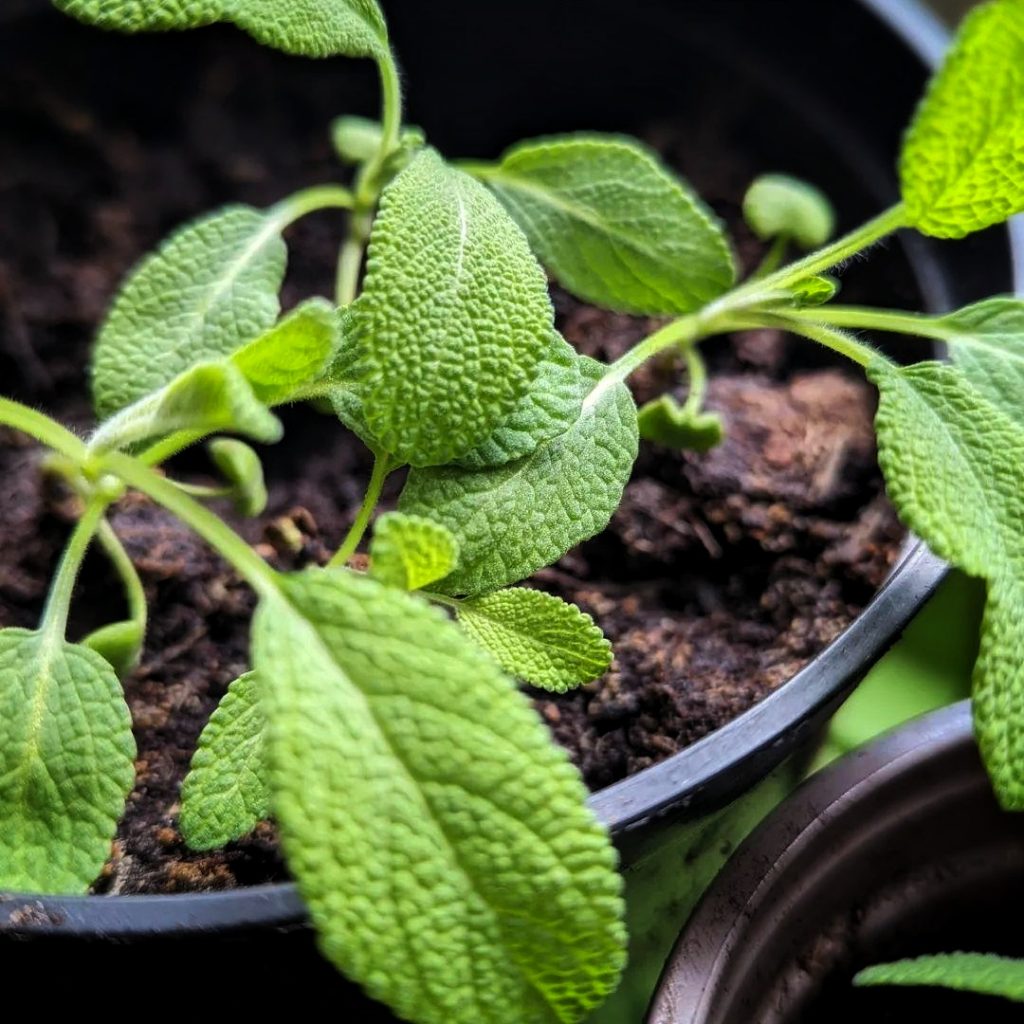
What Does Hardening Off Mean?
Plants raised indoors or in a greenhouse environment, need to be acclimatised to cooler temperatures and increased air movement for about two to three weeks before they are planted outdoors permanently. This is a ‘toughening up’ practice to prepare the plants for their new environment.
How to Harden Off
Place your plants out for a couple of hours in a shady part of the garden. The next day, leave them out again for two hours, but this time allow the plants an hour of direct sunshine in the morning. Gradually continue to increase the length of time the plants are in direct sunshine over the course of roughly two weeks.
Where to Plant Sage
Plant sage seedlings roughy 40 cm apart in a full Sun Position, in free draining soil. * Sage also grows well in a Greenhouse– mine love the warmth of the greenhouse! They also Overwinter very well in a greenhouse environment, providing lovely, healthy fresh growth in spring!
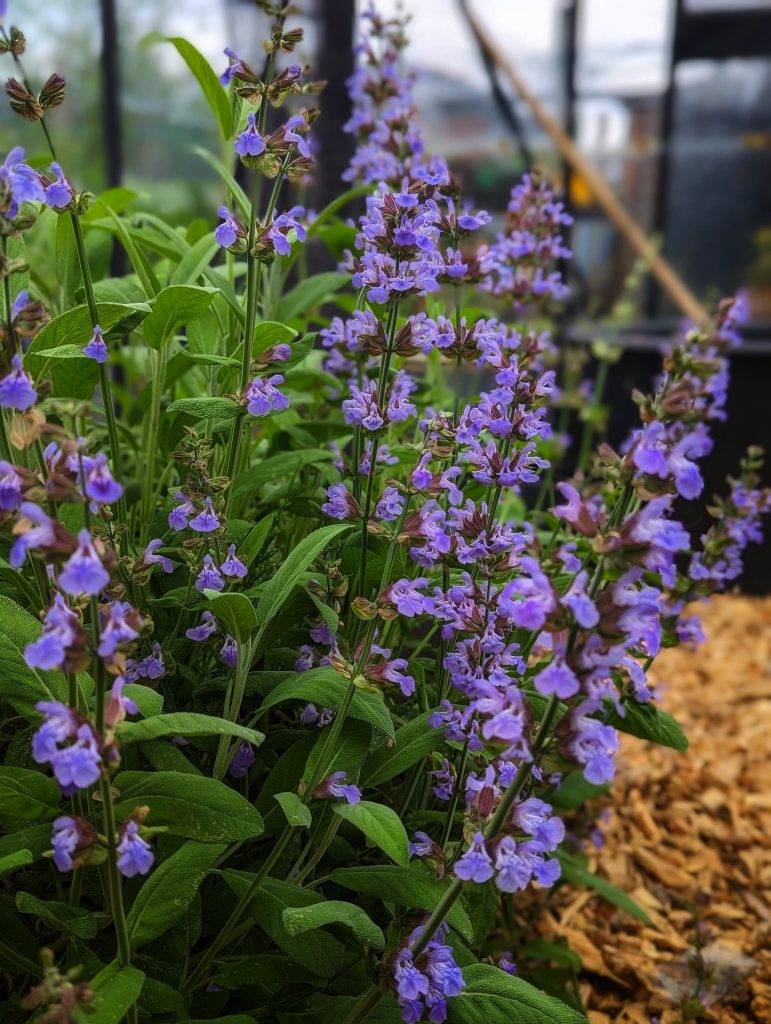
Sage Water Requirements
As mentioned above, Sage is a very drought tolerant plant once established, and so shouldn’t require too much additional watering…unless you are growing in pots. Pot grown Sage can dry out much quicker, so water more often, keeping the soil barely moist.
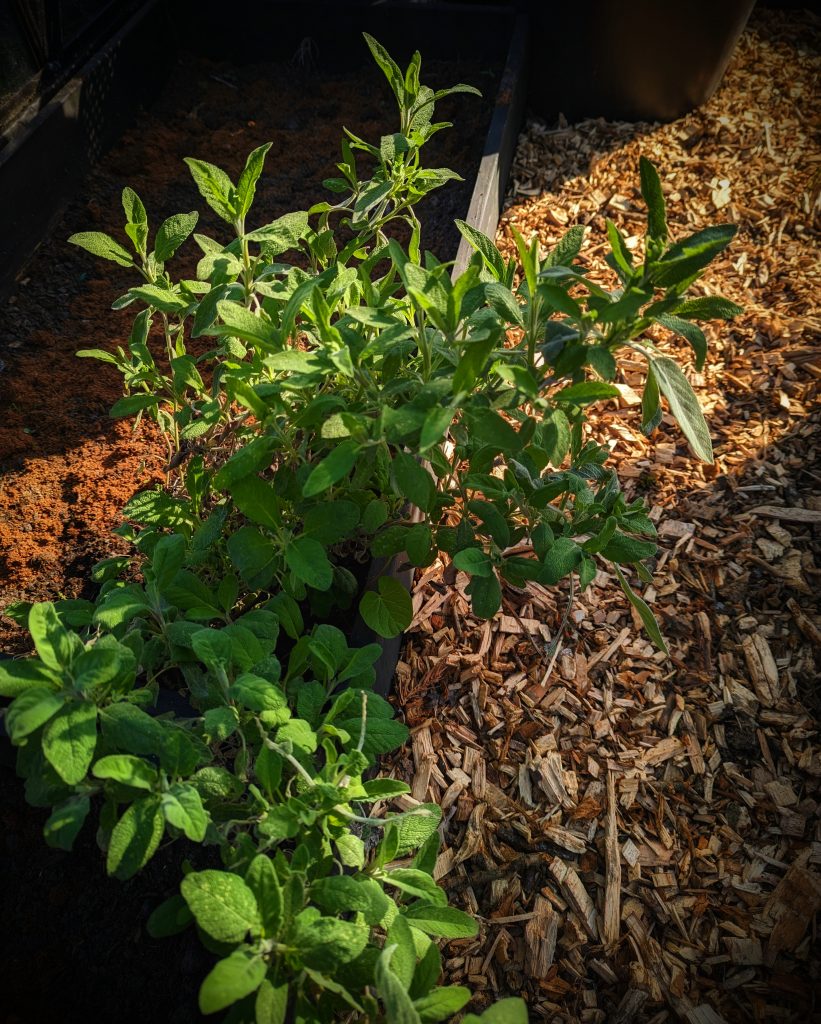
How To Harvest Sage
Now you’ve grown your Sage plant…its time to harvest!
When-Sage leaves can be picked at any time of the year, but they are at their most flavoursome and potent in Spring and early Summer. The best time is early morning after the morning dew has evaporated
How– To harvest sage leaves, you can pick them individually or cut off sprigs with clean pruners
Fresh Or Dry? Sage leaves can be used fresh and used for Culinary purposes. But if you intend to store them long term, they need to be dried
Three Ways To Dry Sage Leaves
- Pop individual leaves in a Dehydrator and set to the lowest heat setting for 12 hours
- Bundle sprigs of sage together in groups of five and hang them to dry in a sheltered, humidity free dry environment, they should be dry enough for storage in 1-2 weeks
- Lay Sage leaves flat on Newspaper in a dry sheltered environment for 1-2 weeks
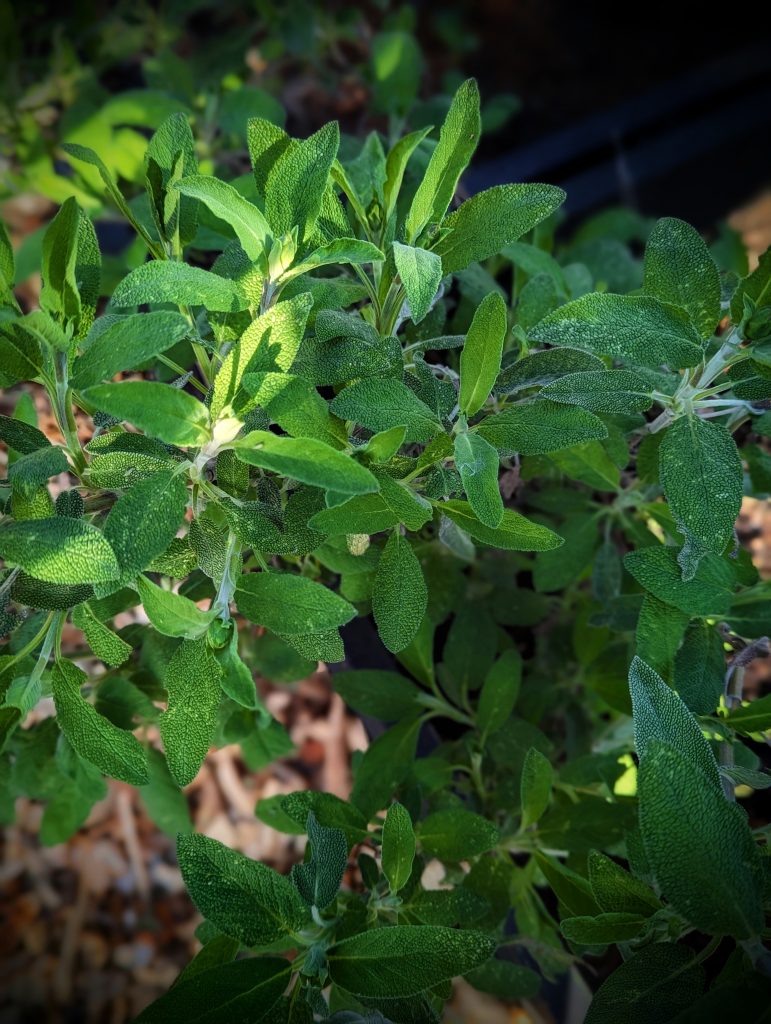
How To Store Dried Sage Leaves
Store your newly dried Sage leaves in an airtight container. Place them in a dry, dark Cupboard out of direct sunlight. Storing sage/ herbs this way will prevent the herbs from oxidizing and losing their potency and flavour.
How Long Will Dried Sage Keep?
If Stored properly dried sage will keep for up to 1 year.
How To Brew Sage Tea ☕
Sage tea is incredibly easy to make. You can Brew with Fresh leaves or Dried Leaves. Here is how I make a healing cup of Sage Tea…
What You’ll Need
Affiliate links
Kettle
Honey or Agave Syrup (For Vegan Friendly Sage Tea)
Lemon Juice
Sweetner or a Tsp of Sugar
Preparation
- Boil the Kettle
- Place 3-4 fresh sage leaves or 1 tsp of dried Sage leaves in a tea ball and place in your tea cup
- Fill your cup with boiling water. Submerging the tea ball completely. Allow to steep for 5 minutes.
- Remove the tea ball. Add sweetener or Sugar, a drop of lemon juice and 1/2 tsp of Honey or Agave
- Stir and serve
What Does Sage Tea Taste Like?
Sage Tea has an earthy, pine like flavour. Adding the Honey and Lemon juice above, gives a delicate sweet flavour with a slightly earthy base flavour.
Sage in Cooking
As Well as its healing benefits, Sage is a wonderful Culinary herb for incorporating into everyday cooking. Its unique flavour makes sage an ideal herb for meat dishes, stews and soups and lets not forget Sage and Onion Stuffing! It also harmonises well with other herbs, such as Rosemary,Thyme, Oregano, Parsley and Bay Leaf. And did you know? It has wonderful Nutritional benefits too! just 1 tablespoon of Sage has 43% of the daily recommended serving of Vitamin K and is a wonderful source of Calcium, Iron, magnesium and fibre..A herb that works hard for your Body!
More Healing Teas
Looking For more ‘Homely’ Inspo ?
Have a Nosey Around the Blog! See what i’ve been Baking, Growing and Drinking! Also, pop over and say Hi on Instagram
*Any specific health claim or nutritional claims or information provided on the Website are for informational purposes only. Nothing on the Website is offered or intended to be a substitute for professional medical, health, or nutritional advice, diagnosis, or treatment. This Website is not intended to diagnose, treat, cure or prevent any disease. You assume full responsibility for consulting a qualified health professional regarding health conditions or concerns.

